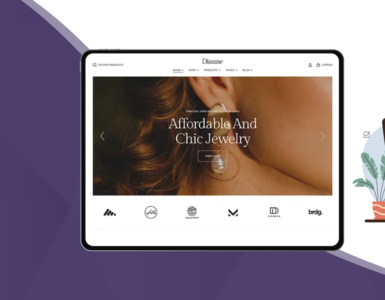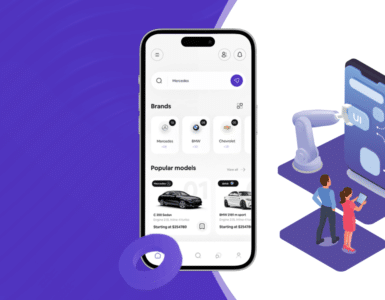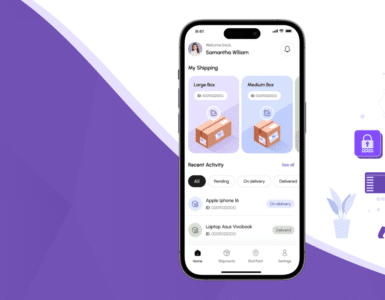Contrary to popular belief, frozen food doesn’t significantly reduce nutritional value. In fact, it can be healthier than its fresh counterparts. Many dietitians and nutritionists explain that freezing helps lock in the nutritional value of food, rather than eliminating it. Now that we’ve addressed that misconception, let’s explore why frozen foods are indispensable in today’s fast-paced lifestyle.
The frozen food industry is expanding rapidly, driven by growing consumer demand and advancements in food technology. These innovations have led to improved taste preservation and quality control, making frozen alternatives more appealing than ever. Moreover, consumers value the convenience of storing frozen food, allowing them to reduce grocery trips and minimize food waste. As a result, frozen food delivery app development has emerged as a lucrative digital venture that gives businesses a competitive edge.
Why Invest in Frozen Food Delivery Apps?
The on-demand service industry—especially in food delivery—has transformed significantly in recent years. With shifting consumer preferences and evolving tech norms, more people are opting for mobile app-based grocery solutions over traditional shopping.
Apps like Schwan’s have been in the game for over 70 years, long before frozen food became a trend. Today, with growing awareness about convenience and cost-efficiency, frozen food delivery apps are drawing more attention from both consumers and app development companies.
Here’s why frozen food is gaining momentum:
-
Saves time in meal prep
-
Reduces food waste through portion control
-
Cost-effective compared to fresh options
-
Offers browsing, ordering, and doorstep delivery under one digital roof
With everything—from frozen snacks to full meals—available in a single app interface, businesses are tapping into this trend by offering seamless, user-friendly digital experiences.

Must-Have Features for a Frozen Food Delivery App
Let’s take Schwan’s app as a case study. It works as a platform that connects users with cold chain retailers and trusted brands like Red Baron, Villa Prima, and Pagoda Asian Snacks.
To build a competitive frozen food delivery app, you’ll need the following core functionalities:
1. User Account & Authentication
Every app begins with user onboarding. It should prompt users to create an account, entering essential details like name, address, and contact information. A secure password authentication system ensures data privacy and allows for personalized experiences and targeted offers.
2. Food Browsing Interface
The user must be able to seamlessly navigate food categories, view product details, and check pricing. Features like:
- Add to cart
- Quantity selectors
- Price visibility
…should be intuitive and accessible. The browsing gallery is where users spend the most time—so design, clarity, and layout are crucial.
3. Delivery Tracking & Management
An efficient app allows users to:
- Track their delivery status
- Receive real-time notifications
- Update delivery preferences
Some apps go a step further with live GPS tracking, which can significantly enhance customer satisfaction.
4. Flexible Payments
Your app must support multiple payment methods including:
- Credit/Debit cards
- UPI
- Digital wallets
- Cash on delivery (COD)
With increasing digital adoption, especially in regions like India, it’s essential to partner with trusted payment gateways for secure transactions.
5. Customer Feedback & Reviews
On-demand services thrive on customer trust. A built-in feedback feature allows users to rate food items, share concerns, and leave comments. This not only helps other buyers but also provides valuable insights for app improvements. Make sure to:
- Respond promptly to queries
- Address concerns transparently
Interactive and easy-to-use review systems build long-term brand loyalty.
Frozen Food Delivery App Development Costs
A basic frozen food delivery app typically starts at $10,000 USD, covering only the must-have features. The cost can rise depending on:
- Feature complexity
- UI/UX customization
- Backend and third-party integrations
- Hourly development rates
Here’s a simple cost estimation formula:
Total Development Cost = Hourly Rate × Development Hours
The hourly rate varies by region. For instance, hiring a mobile app development company in India or Eastern Europe can be more cost-effective compared to North America.
If you’re considering outsourcing, explore reliable firms which specialize in on-demand app development and offer scalable solutions based on your business needs.
In cases where advanced features like AI-based recommendations, live order tracking, or loyalty programs are added, the cost may exceed $15,000 USD.

Key Takeaways for Business Owners
The frozen food delivery market is evolving fast, and businesses that invest early can capture long-term value. Here are some tips to get started:
-
Understand your target market: Study regional habits and preferences before launching.
-
Partner with reliable cold chain suppliers to maintain product integrity.
-
Choose an experienced development partner who can scale your app in the future.
-
Keep UI/UX simple and intuitive to avoid drop-offs.
-
Use data analytics to track user behavior and optimize your offerings.
Remember, the goal is to build an agile, user-centric app that delivers both convenience and quality.
Conclusion
The on-demand frozen food delivery segment holds immense potential. Whether you’re a startup or an established food brand, investing in an intuitive, feature-rich mobile app could give you a first-mover advantage in this growing space.
Start small, focus on your local market, and gradually scale with confidence. With consumer behavior shifting toward convenient and time-saving solutions, now is the right time to enter the frozen food app economy.
























